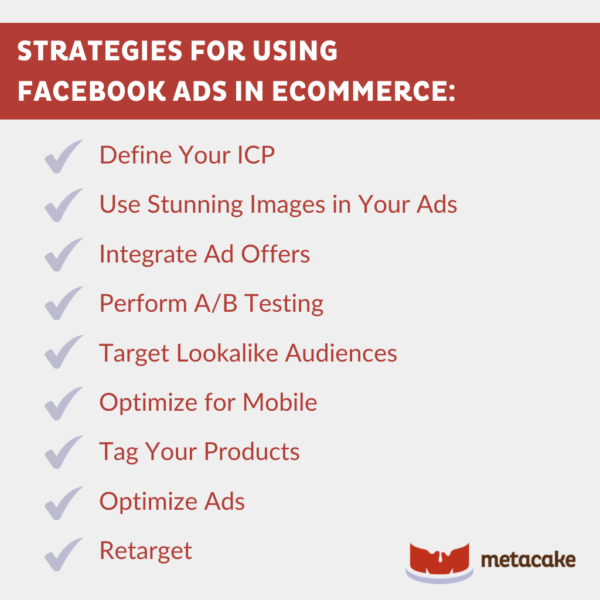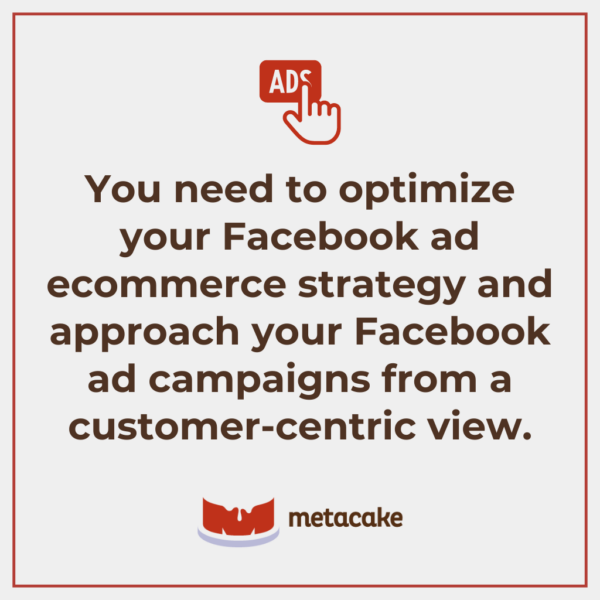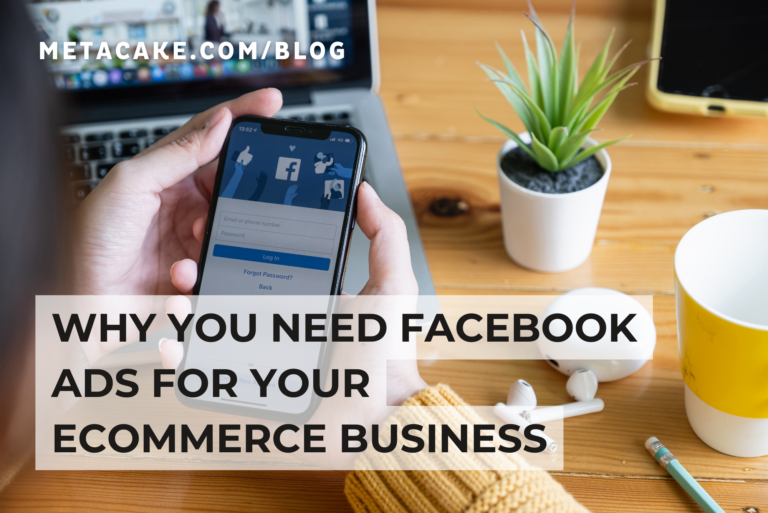Many ecommerce owners aren’t using Facebook ads today. But why?
Everyone is aware of Facebook advertising, but many aren’t aware of all its capabilities and are often worried about conversion rates. Some even believe their customers aren’t on Facebook (especially for B2B companies).
They couldn’t be more wrong!
According to Statista, Facebook takes center stage on the social media landscape, with over three billion monthly active users (MAU) as of January 2024.
We’d argue that your customers are on Facebook (or at least some segment of them), even for B2B companies. And with its powerful targeting capabilities, Facebook advertising is a great way to reach them.
As for response rates, not all Facebook ads are effective. But with proper targeting, design, and messaging, they usually are.
In this article, we’ll go over how you can optimize Facebook ads in ecommerce and why they’re a win-win in advertising.

Facebook Ads in Ecommerce
Not all businesses require Facebook ads as a primary advertising channel, but if you’re an ecommerce store, Facebook ads should certainly be one of your marketing channels.
In fact, Facebook’s advertising platform is taking over many other channels of marketing because it allows you to create highly personalized messages for hyper-targeted audiences.
You can segment your audience all the way down to one specific person if you want to. Although that’s probably a bit extreme, you get the point.
If you’re seeing a decline in your ROI, don’t lose hope just yet! Facebook ads are still great — especially for brand awareness and targeting people who fit your ideal customer profile (ICP).
The problem is the sheer volume of Facebook ecommerce ads running on the platform. Buyers get tired of — or used to — the same types of ads.
You need to optimize your Facebook ad ecommerce strategy and approach your Facebook ad campaigns from a customer-centric view.
Successful ad strategies for ecommerce are less focused on the product and more on the customer experience with that product.
Let’s go over some strategies for using Facebook ads in ecommerce.

Define Your ICP
First and foremost, identify your ICP — or the hypothetical customer who’s most likely to benefit from your product. From there, you can create multiple custom audiences around that ICP.
Map those traits directly into targeting demographics, interests, location, language, etc., within Facebook’s ad builder to create multiple segments that fit your target audience.
You want multiple targeting paths in order to experiment, figure out which audience responds best, and tailor your message to each specific audience.
Use Stunning Images in Your Ads
A picture’s worth a thousand words — or, in this case, a thousand potential customers.
Images play a vital role in advertising because they can immediately capture attention, elicit emotions, and effectively convey messages. Be sure to add high-quality, eye-catching images to your ads. Opt for bright, colorful visuals that stand out in users’ feeds.
Avoid colors similar to Facebook’s blue and white to prevent blending in. Incorporate images of happy people, especially if they’re using your product.
Integrate Ad Offers
Integrating ad offers into Facebook ads can significantly enhance the effectiveness of your advertising campaigns. Here’s how it can help:
- Boosts Conversion Rates: By including special offers directly in your ads, you create a sense of urgency that drives more conversions. Facebook even sends reminders to users about the offers they’ve saved, keeping your brand top-of-mind.
- Enhances Ad Performance: Offers can be a compelling call to action that encourages users to engage with your ad. Testing different offers can help you identify what resonates best with your audience.
- Improves Tracking: When you integrate offers into your ads, you can track metrics like “offers saved,” which provides another data point on campaign performance. This helps in fine-tuning your strategy for better results.
- Targets Specific Audiences: You can target offers to specific audiences, such as new customers, followers, or those who’ve abandoned their cart. This makes your ads more relevant to the users who see them.
- Simplifies Redemption Process: By connecting offers to a code or specifying where they can be redeemed, you streamline the process for customers, making it easier for them to take advantage of your promotions.
Perform A/B Testing
A/B testing, also known as split testing, is a powerful strategy for optimizing Facebook ads. It involves comparing two versions of an ad to determine which one performs better based on specific metrics such as click-through rate, conversion rate, or return on ad spend.
By implementing A/B testing in your Facebook ad campaign, you can systematically improve your ad’s performance and achieve better results with your advertising budget. Remember to test only one variable at a time to clearly understand which change led to improved performance.
Target Lookalike Audiences
Facebook lookalike audiences is a clever little cupid that connects your business with new fans. It’s also a potent advertising tool.
You inform Facebook about your preferred customers’ traits, and Facebook offers a new target audience that includes prospects that fulfill your criteria.
According to Meta, here’s some additional information you may need:
- You need an existing source audience before you can create a lookalike audience.
- You can create up to 500 lookalike audiences from a single source audience.
- Your source audience must contain at least 100 people from a single country to use it as the basis for a lookalike audience.
- Lookalike audiences require you to select a location.
- You can use Meta Advantage to show your ads to people outside your defined lookalike audience.
- People in your source audience are excluded from your lookalike audience.
- You can use multiple lookalike audiences at the same time for a single ad set. In this instance, the ad set targets your ads to people in any of your selected lookalike audiences.
Optimize for Mobile
With an estimated 92% of Americans owning a smartphone, it’s no surprise that mobile optimization is crucial to your Facebook ads.
Meta outlines some tips to help you easily adapt your existing assets for mobile:
- Turn static images into video ads with slideshows.
- Trim your video to match consumption behavior on mobile.
- Crop your video to fit the mobile screen.
- Create assets that work with sound on and off.
We go more in-depth on mobile optimization best practices in this blog.
Tag Your Products
Tagging products in Facebook ads is a great way to showcase your items directly within your posts and ads, making it easier for customers to discover and shop for your products. It’s also very simple.
For a quick tutorial on tagging products, check this out.
Optimize Ads
Make sure the Meta Pixel has been installed on your site to track conversions and that Google Analytics is installed to track what’s working and what’s not working. Then adjust as needed.
Retarget
You don’t want to reach people just once. The majority of the time, it takes several touches to get customers to convert, so retargeting is key.
One good way to do this is through Facebook’s Dynamic Ads, which displays the actual items your individual visitors have viewed in the past or added to their cart.
Win-Win Advertising
Facebook ads are a win for the brand and a win for the customer.
Customers don’t hate advertising; they hate bad and inappropriate advertising. However, good and relevant ads are typically welcomed. If you identify your potential customers correctly and sell them products that’ll actually make their lives better, the response will be positive (even if they don’t buy in the end).
In addition, just like regular Facebook comments and posts, Facebook ads gain social proof through shares, comments, and likes, which is a really powerful combination. It helps your ads gain momentum.
We had one client create a Facebook ad that had over 10,000 shares and comments, driving a ton of business that the company didn’t even have to pay for.
Final Thoughts
Now that you know why you need Facebook ads for your ecommerce business, are you ready to get started? We understand if it’s all a bit overwhelming, and we’re here to walk you through each and every step.
Simply reach out today; our award-winning team is ready and waiting.
